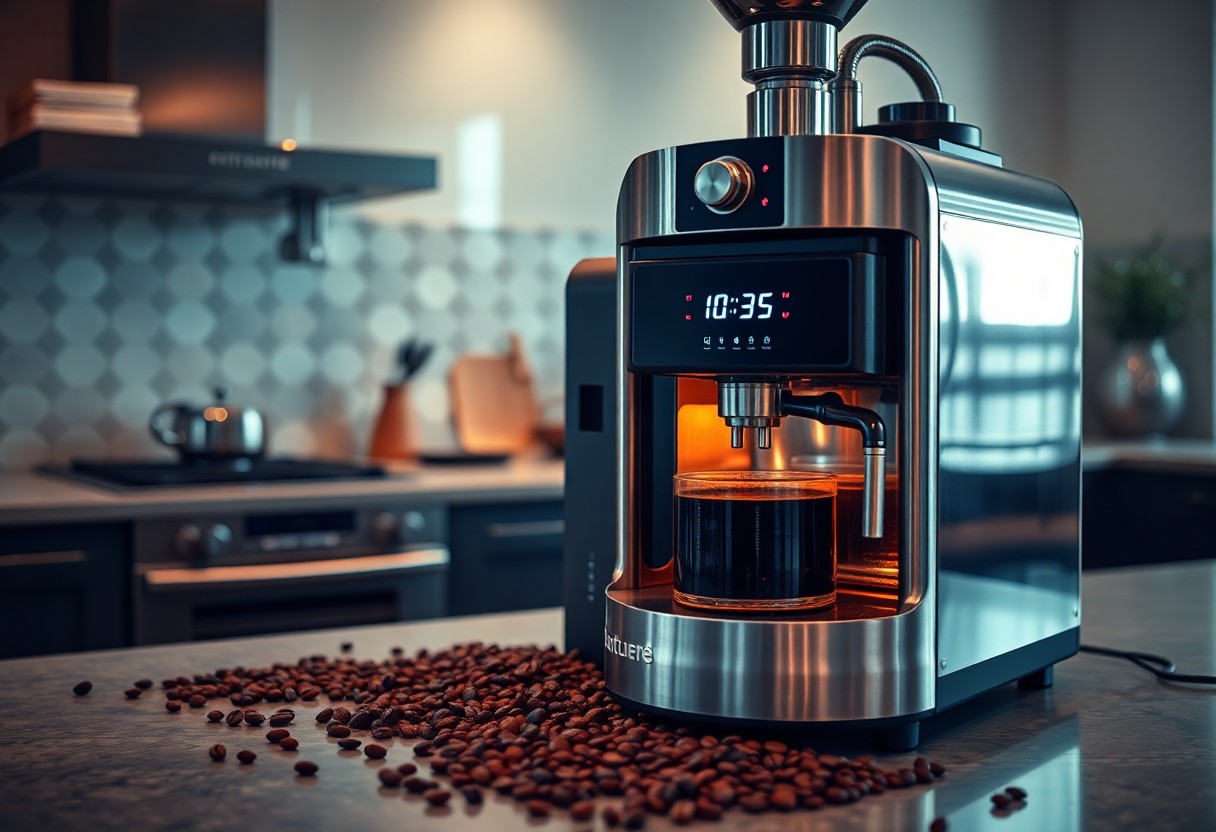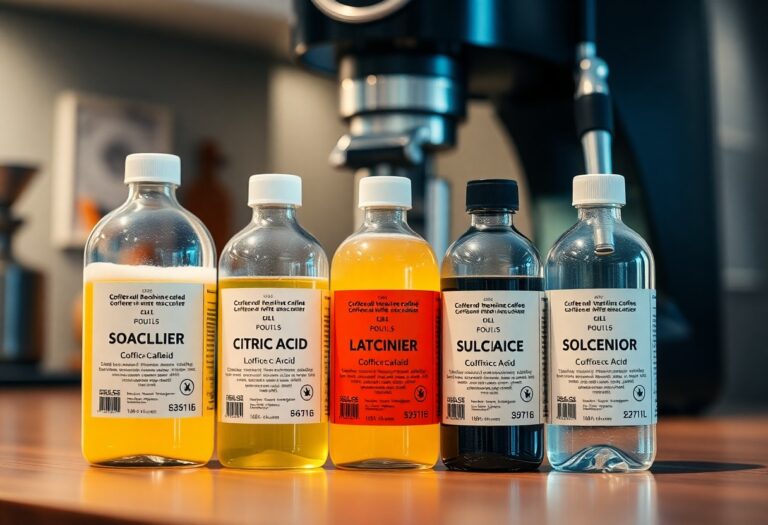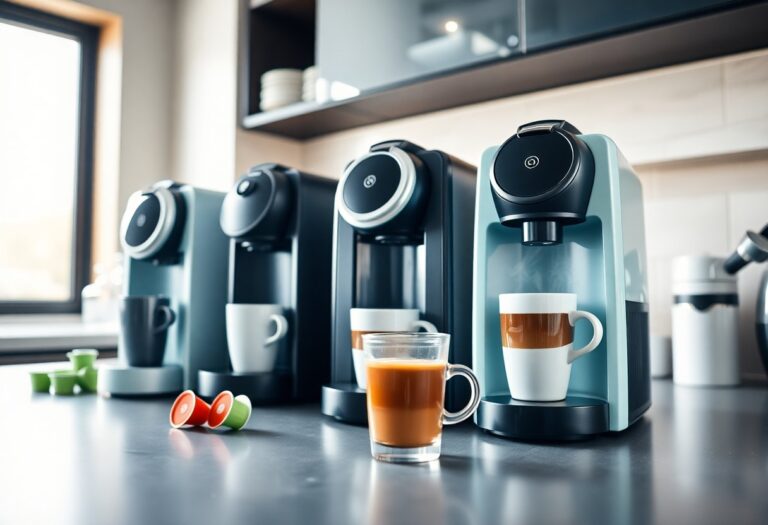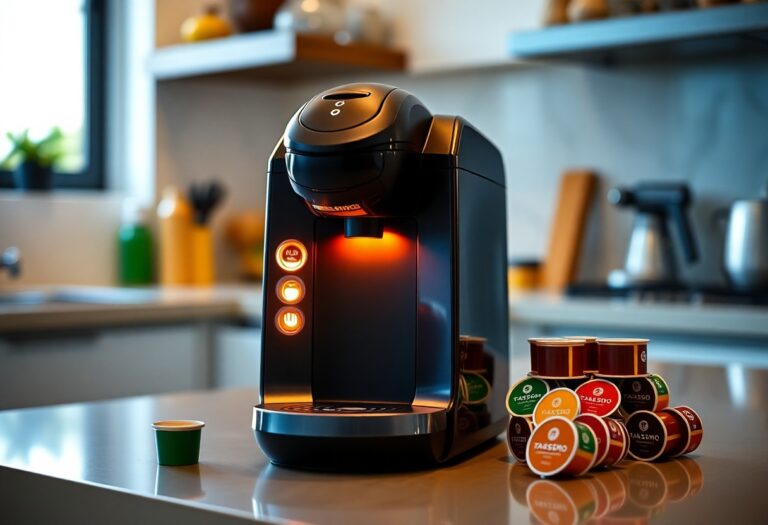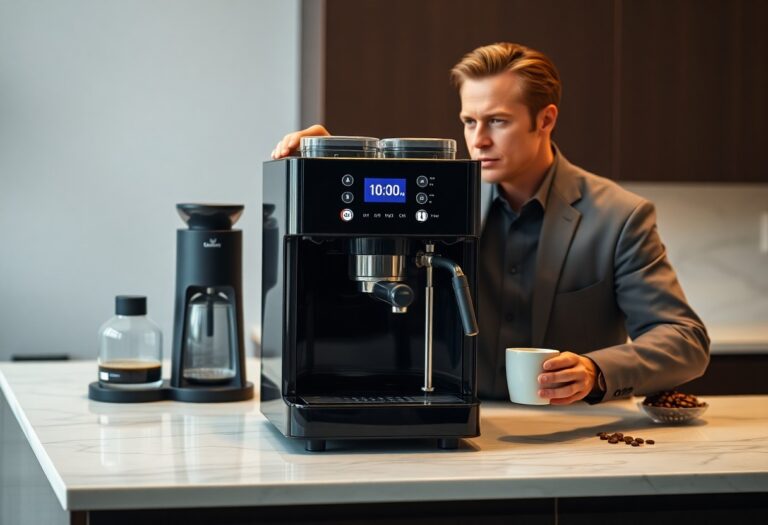What is the Best Coffee Roaster Machine – Home Roasting Equipment
Over the years, the art of home coffee roasting has grown in popularity, allowing you to experience the false flavors of freshly roasted beans right from your kitchen. Choosing the best coffee roaster machine can significantly enhance your brewing experience, giving you control over your roast profile and ensuring that you avoid the common pitfalls of poor-quality equipment. In this article, we’ll explore various home roasting options, their features, and how they can elevate your coffee game to new heights.
Key Takeaways:
- Consider the roasting method: Different machines utilize various roasting techniques, such as air roasting or drum roasting, impacting the flavor profile of the coffee.
- Capacity Matters: Select a roaster that fits your consumption needs, whether for small batches or larger quantities, as this affects the roasting process and end result.
- Features vs. Simplicity: Advanced features like temperature control, chaff collection, and built-in profiling can enhance the roasting experience, but simpler machines may better suit beginners.
- Price Range: Coffee roasters come in various price ranges, so evaluate your budget against the features you desire to find the best fit for your home brewing.
- Ease of Cleaning: Look for roasters with easy-to-clean designs to simplify maintenance and ensure a longer lifespan for your equipment.
The Art of Home Coffee Roasting: Why It Matters
The beauty of home coffee roasting lies in its ability to transform green beans into a personalized brew that reflects your taste preferences. Understanding this art enhances your coffee experience, allowing you to explore various roasting levels and discover *unique characteristics* inherent to each bean. You’re not just making coffee; you’re creating a beverage that resonates with your individual palate, enhancing both enjoyment and appreciation of the drink.
Crafting Unique Flavors
Every roasting profile you experiment with can unlock a *different flavor spectrum*. From fruity and floral to nutty and chocolatey, the choice of bean combined with your roasting technique allows you to highlight the *intrinsic notes* that each variety possesses. This process transforms a simple cup of coffee into a narrative of origin, processing method, and roast level, inviting you to savor the complexity in every sip.
Controlling Freshness and Quality
Freshness is a significant factor in achieving an exceptional cup of coffee. By roasting your own beans, you gain control over *every batch*, ensuring that you consume them at their peak flavor and aroma. Unlike commercially packaged coffees that may sit on shelves for months, your freshly roasted coffee can be enjoyed within days, preserving the vibrant oils and volatile compounds that contribute to its *rich profile*.
Your ability to roast coffee at home ensures you have the freshest beans possible. The window of optimal flavor is short-lived, typically around 7 to 14 days post-roasting. With this understanding, you can align your roasting frequency with your consumption, creating a routine that delivers your coffee just as it hits that *sweet spot of freshness*. The smells that waft from your kitchen as beans caramelize and crack in the roaster are indicators of their freshness, making each session not just a task, but a sensory experience. By controlling this aspect, you can avoid the pitfalls of stale coffee, thereby elevating your daily brew to something truly exceptional.
Decoding Coffee Roaster Options: Electric vs. Manual
Choosing between electric and manual coffee roasters involves evaluating how you prefer to roast your beans. Electric roasters typically offer convenience and consistency, allowing you to set precise temperatures and timer settings, while manual methods offer a more hands-on approach that lets you control every aspect of the roasting process. Your decision may depend on whether you prioritize ease of use or the traditional experience of crafting your roast from scratch.
Advantages and Disadvantages of Electric Roasters
Electric roasters provide uniform heat distribution and easy operation, making them ideal for beginners. Many models come with programmable settings, allowing you to replicate your favorite roast profiles effortlessly. However, they come with a higher price tag, consuming a decent amount of energy and may limit your ability to make minute adjustments during the roasting process.
The Appeal of Manual Methods
For those who enjoy a more tactile experience, manual coffee roasting methods can be incredibly rewarding. Techniques such as using a popcorn popper or a stovetop pan offer greater flexibility and allow you to experiment with the nuances of flavor development. You’ll feel the heat and hear the cracks of the beans, fostering a deeper connection to the roasting process.
Engaging in manual roasting means you embrace the art of experimentation. With more hands-on control, you can adjust the roasting time or temperature quickly with each batch, accommodating the unique characteristics of different beans. This method encourages you to develop your palate as you learn how to bring out specific flavors by altering your roasting techniques. Each roast becomes a personalized journey, where with each cup you sip, you can sense the subtle differences crafted by your own hands.
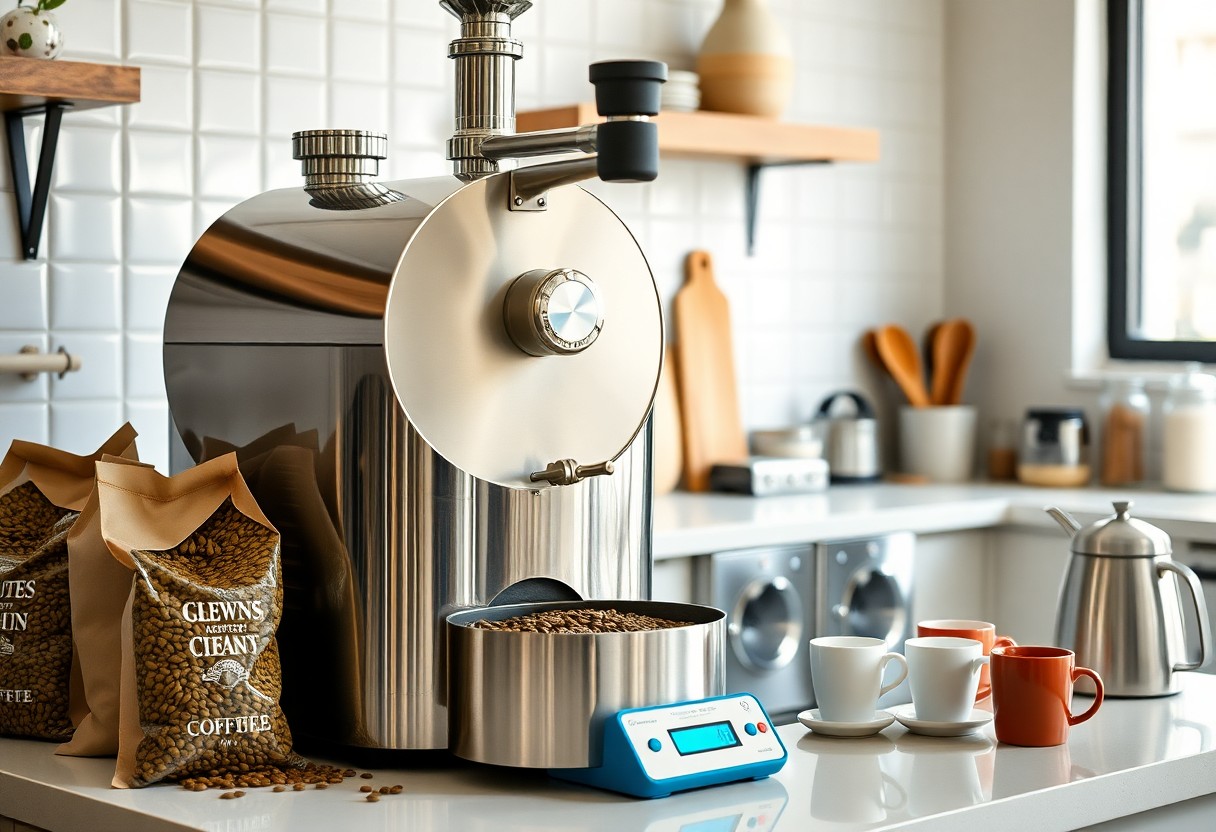
Key Features to Look for in a Coffee Roaster
When dicking out a coffee roaster, prioritize several key features to ensure you get the most value and performance from your investment. Look for strong temperature control options that allow for consistency in roasting, versatile roasting capacity suitable for your needs, and ease of cleaning and maintenance to keep your roaster in top shape. Additionally, check for user-friendly interfaces that make monitoring roast progress simple. After weighing these features, you can make a better-informed decision.
- Temperature Control: Essential for achieving desired roast levels.
- Roasting Capacity: Determines batch sizes, whether small or large.
- Time Efficiency: Faster roasts mean more cups in less time.
- Ease of Cleaning: Simplifies maintenance tasks and prolongs machine life.
- User Interface: An intuitive display for tracking the roasting process.
Roasting Capacity and Time Efficiency
Roasting capacity directly impacts how much coffee you can prepare in a single session. Smaller machines may only handle about 0.5 to 1 pound of beans, while larger units can accommodate up to 5 pounds or more. If you’re someone who enjoys entertaining, consider upgrading to a model that maximizes your time efficiency. Engaging with a roaster designed with optimal throughput can help you save on energy expenses and free up time for other activities.
Temperature Control and Consistency
Achieving the perfect roast depends heavily on how well you control the temperature. Machines with precise heating elements ensure that your beans are roasted evenly, regardless of batch size. This consistency is vital, as even minor temperature fluctuations can lead to significant changes in flavor profile. Your choice should reflect features that allow you to adjust heat settings quickly, ensuring every batch meets your desired quality.
Temperature Control and Consistency Overview
| Feature | Description |
|---|---|
| PID Controllers | Provides digital control of roasting temperature for precise adjustments. |
| Cooling Systems | Ensures rapid cooling after roasting to lock in flavors and prevent over-roasting. |
| Airflow Management | Regulates airflow for even roasting and to influence flavor profiles. |
| Real-Time Monitoring | Allows you to track temperature changes during the roasting process, enhancing control. |
Investing in a roaster that excels in temperature control and consistency effectively elevates your home roasting experience. Whether it’s advanced PID controllers that fine-tune the heat or state-of-the-art cooling systems to stop the roast in its tracks, these features ensure you can achieve your desired roast without unpredictable burnout or uneven flavors. As you explore different options, prioritize models that showcase superior engineering in this area for consistent results batch after batch.
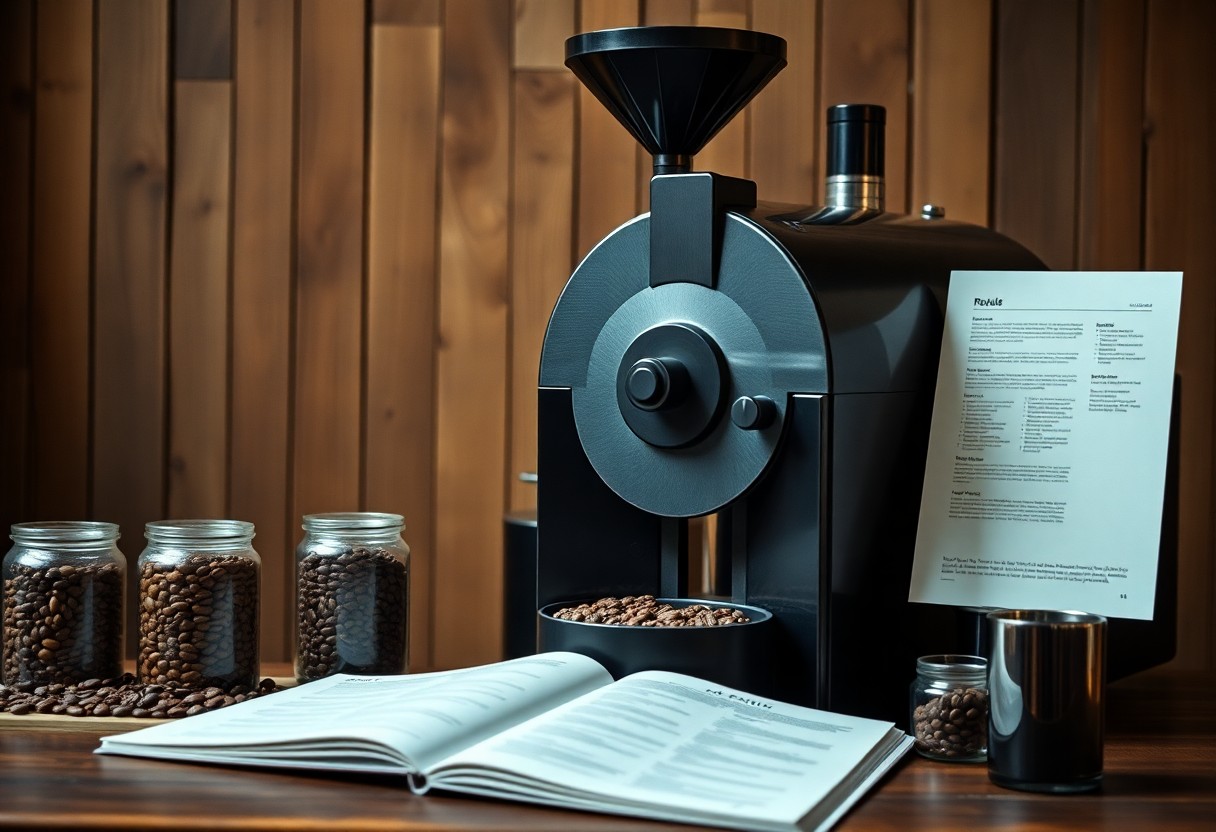
Top Coffee Roaster Machines Reviewed: A Comparative Analysis
| Model | Key Features |
|---|---|
| Behmor 1600 Plus | 5 programmable roast profiles, 1 lb capacity, smoke reduction technology. |
| Hottop KN-8828B | Fully programmable, 1.1 lb capacity, manual control option for advanced users. |
| FreshRoast SR540 | Perfect for beginners, adjustable heat and fan speed, 4 oz capacity. |
| Gene Cafe CBR-101 | Unique design for even roasting, dual cooling mode, 250g capacity. |
Entry-Level vs. Premium Models
Choosing between entry-level and premium coffee roasters often comes down to your personal experience level and roasting ambitions. Entry-level models, like the FreshRoast SR540, offer easy setup and decent roast quality, ideal for beginners. Conversely, premium options, such as the Hottop KN-8828B, provide advanced features—full programmability and larger capacities—that cater to serious enthusiasts looking to refine their skills.
Essential User Feedback and Insights
User feedback highlights key aspects of coffee roasters you should consider before making a purchase. Individuals rave about Behmor’s programmable settings for convenience, while others emphasize the Hottop’s manual controls for precision roasting. Factors like durability and ease of cleaning also emerge frequently in discussions, underscoring the importance of practicality in your decision.
Insights from consumer reviews reveal common themes that can significantly influence your choice. Many users appreciate the versatility of models like the Gene Cafe CBR-101 due to their ability to handle various bean types and roasting styles. Additionally, a considerable number of roasters mentioned how customer service experiences enhanced their ownership satisfaction, pointing to the importance of support availability when purchasing premium models. Overall, engaging with the coffee roasting community can also provide you with various tips, leading to a more enriching experience.
Mastering the Roasting Process: Tips for Beginners
Getting started with home roasting can be an addictively thrilling adventure, offering you the chance to curate your perfect cup of coffee. Begin with a clean roaster and high-quality green beans to ensure optimal results. Keep an eye on the roast profile and adjust time and temperature according to your preferences. Experimentation is key; take notes on each roast to refine your approach. Stay patient as you learn the nuances of your machine and develop your palate. For expert guidance, check out The 7 Best Home Coffee Roasters for Fresh Beans Anytime. The more you practice, the more skilled you’ll become.
Understanding the Roast Levels
Roast levels greatly impact the flavor and aroma of your coffee. Light roasts are characterized by a mild flavor and a higher acidity, while medium roasts offer a balance between sweetness and acidity. Dark roasts, conversely, provide bold, smoky flavors but often lose distinct bean characteristics. Familiarizing yourself with these levels helps you identify your personal preference and guides your roasting process, allowing you to experiment with where each roast fits in your ideal spectrum.
Troubleshooting Common Roasting Challenges
Encountering issues during the roasting process is common, especially for beginners. You might face uneven roasts, chaff accumulation, or burnt flavors. Each of these problems can be attributed to factors such as inconsistent temperatures, inadequate cooling methods, or insufficient stirring during the roast. Identifying these challenges allows you to adapt and enhance your roasting technique over time.
For example, if you notice uneven roasting or scorching, ensure that your beans are evenly spread within the drum and monitor the temperature closely. Chaff buildup can affect airflow and flavor; regularly clean your roaster and consider using a chaff collector. As you gain experience, keeping a detailed record of your roasts will significantly help in pinpointing patterns and solutions. The right technique transforms each roast into the exceptional brew you’re aiming for.
Final Words
With this in mind, as you explore the best coffee roaster machine for home roasting, consider your preferences, budget, and the space you have available. Whether you choose a drum roaster for consistent results or an air roaster for its simplicity, investing in quality equipment will enhance your coffee experience. Pay attention to features like capacity, temperature control, and ease of use to find the perfect match for your needs. By selecting the right roaster, you can unlock the rich flavors of freshly roasted coffee and elevate your brewing ritual.
FAQ
Q: What features should I look for in a home coffee roaster machine?
A: When choosing a home coffee roaster machine, consider features such as roasting capacity, temperature control, and roasting time settings. Look for machines that offer programmable options and monitoring capabilities to ensure even roasting. A machine that allows you to customize your roast profile can also enhance your home roasting experience.
Q: What types of coffee roasters are available for home use?
A: There are various types of home coffee roasters, including air roasters, drum roasters, and stovetop roasters. Air roasters use hot air for roasting and are often quicker, while drum roasters use a rotating drum to ensure even roasting. Stovetop roasters are more manual and can produce a unique flavor, making them great for those who want a hands-on approach.
Q: How do I determine the right roasting capacity for my needs?
A: The right roasting capacity depends on your coffee consumption habits. If you drink coffee daily or entertain guests often, consider a machine that can roast larger batches, typically ranging from 1/4 to 1 full pound per roast. For occasional use or smaller households, a smaller capacity roaster may be sufficient.
Q: What is the typical roasting time in a home coffee roaster?
A: The roasting time in a home coffee roaster can vary depending on the type of machine and the desired roast level. Generally, roasting takes anywhere from 8 to 15 minutes. Light roasts may take less time, while darker roasts usually require a longer roasting period. Monitoring the process is necessary to achieve the perfect roast.
Q: How do I clean and maintain my home coffee roaster?
A: Regular cleaning and maintenance are important for the longevity of your coffee roaster. After each use, allow the roaster to cool down, then empty the chaff collector and clean the roasting chamber with a soft brush or cloth. Follow the manufacturer’s instructions for deeper cleaning and check for any needed parts maintenance to ensure your machine runs efficiently.

